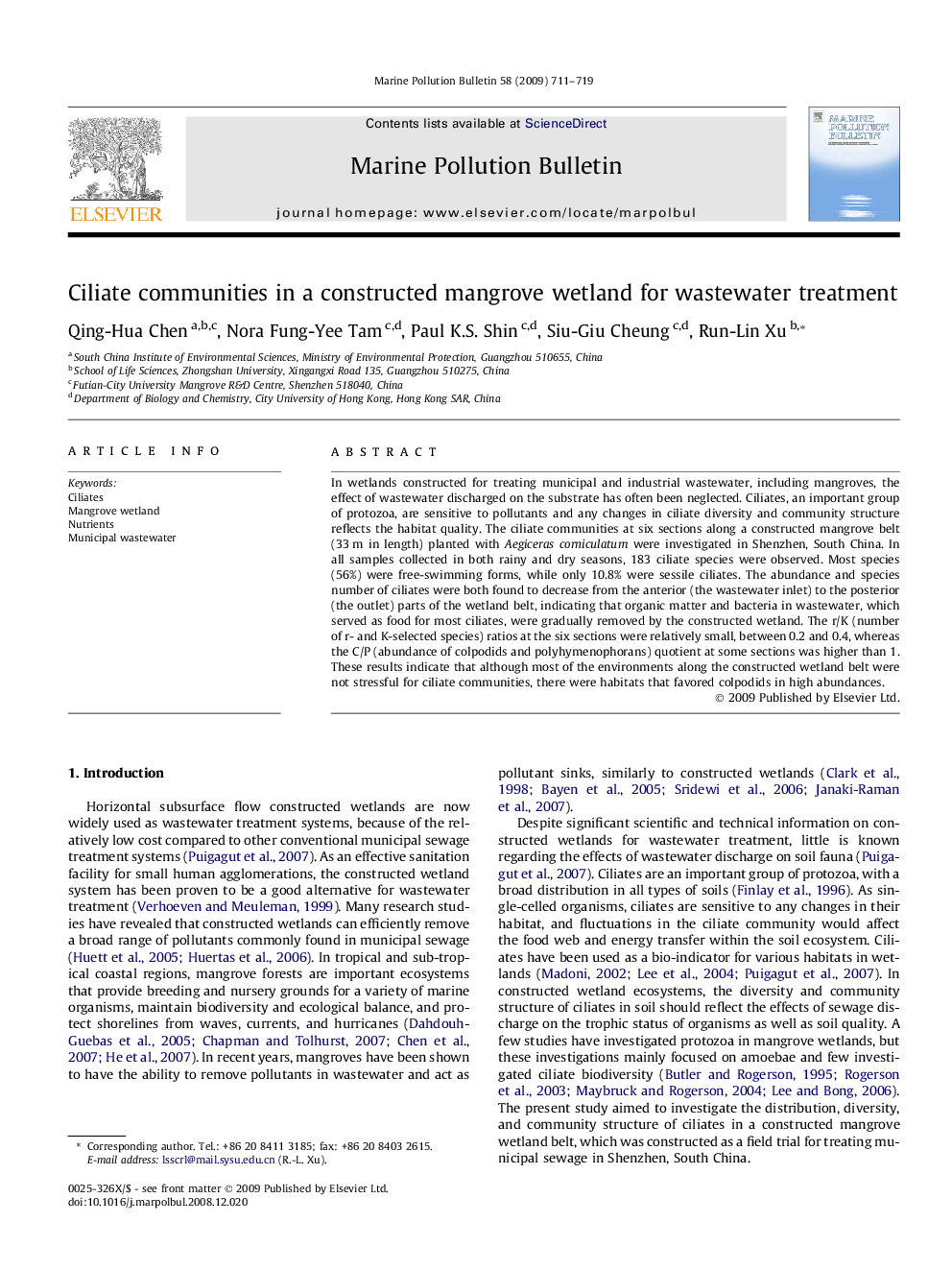| Article ID | Journal | Published Year | Pages | File Type |
|---|---|---|---|---|
| 4476962 | Marine Pollution Bulletin | 2009 | 9 Pages |
In wetlands constructed for treating municipal and industrial wastewater, including mangroves, the effect of wastewater discharged on the substrate has often been neglected. Ciliates, an important group of protozoa, are sensitive to pollutants and any changes in ciliate diversity and community structure reflects the habitat quality. The ciliate communities at six sections along a constructed mangrove belt (33 m in length) planted with Aegicerascorniculatum were investigated in Shenzhen, South China. In all samples collected in both rainy and dry seasons, 183 ciliate species were observed. Most species (56%) were free-swimming forms, while only 10.8% were sessile ciliates. The abundance and species number of ciliates were both found to decrease from the anterior (the wastewater inlet) to the posterior (the outlet) parts of the wetland belt, indicating that organic matter and bacteria in wastewater, which served as food for most ciliates, were gradually removed by the constructed wetland. The r/K (number of r- and K-selected species) ratios at the six sections were relatively small, between 0.2 and 0.4, whereas the C/P (abundance of colpodids and polyhymenophorans) quotient at some sections was higher than 1. These results indicate that although most of the environments along the constructed wetland belt were not stressful for ciliate communities, there were habitats that favored colpodids in high abundances.
